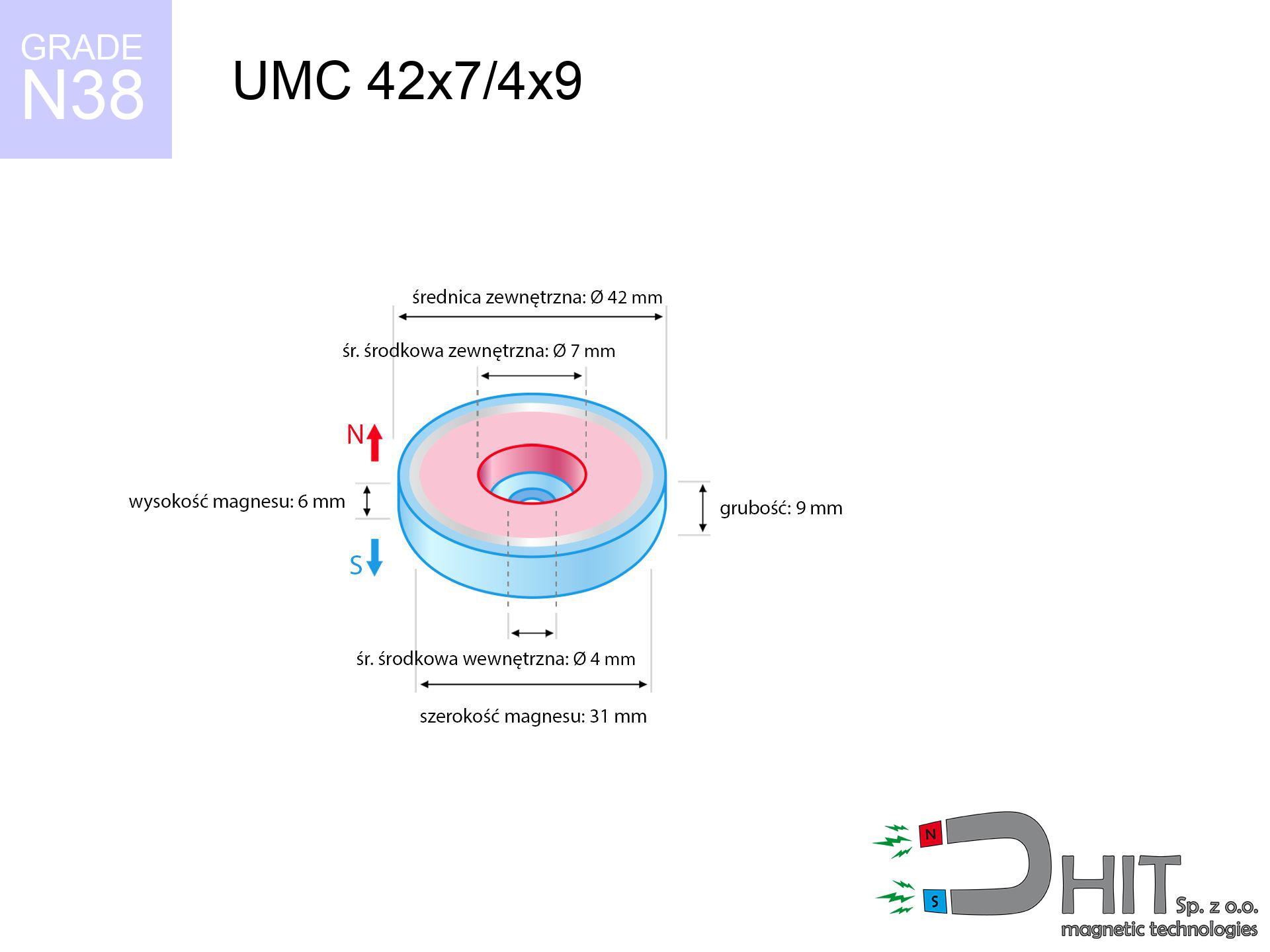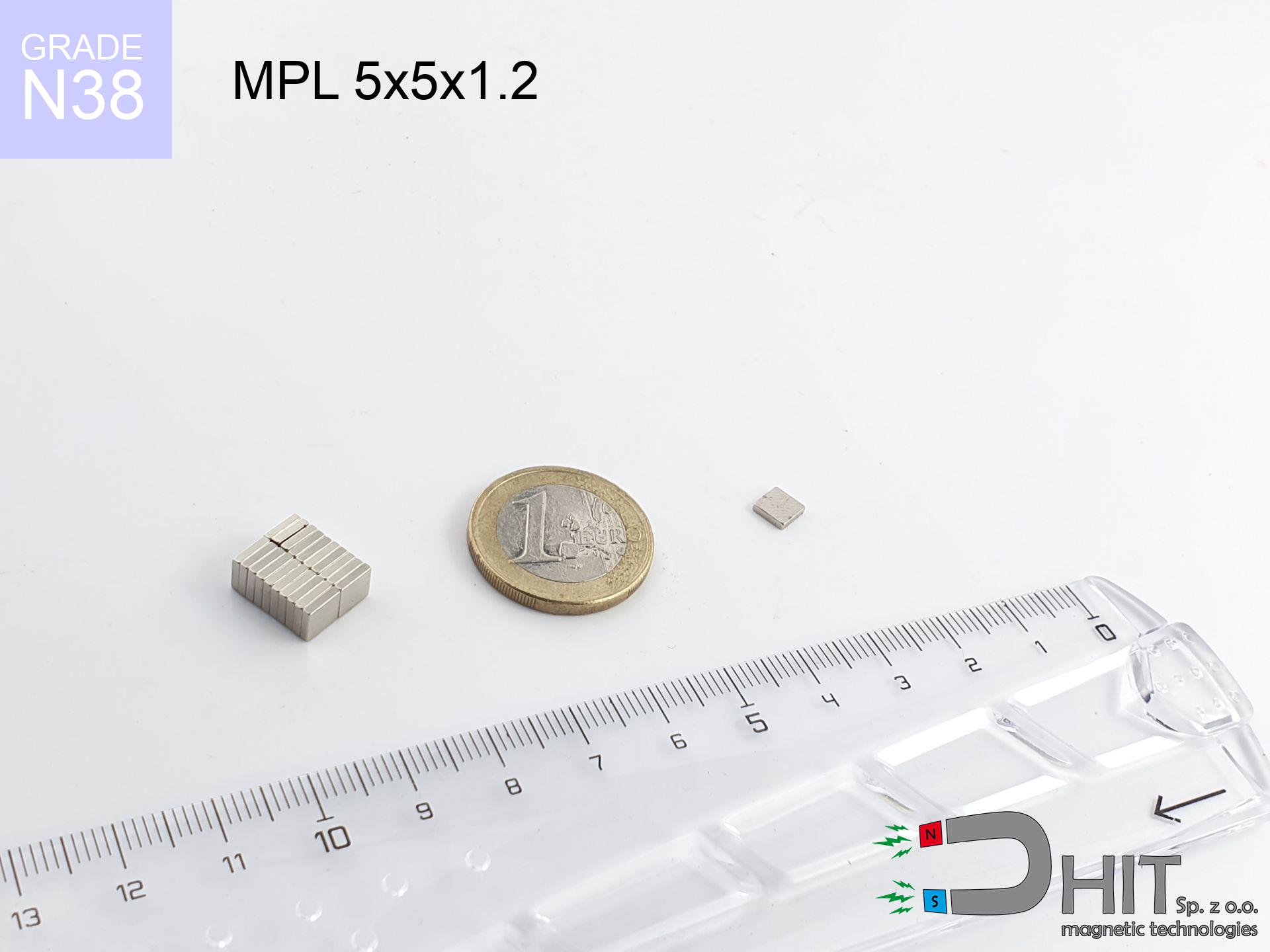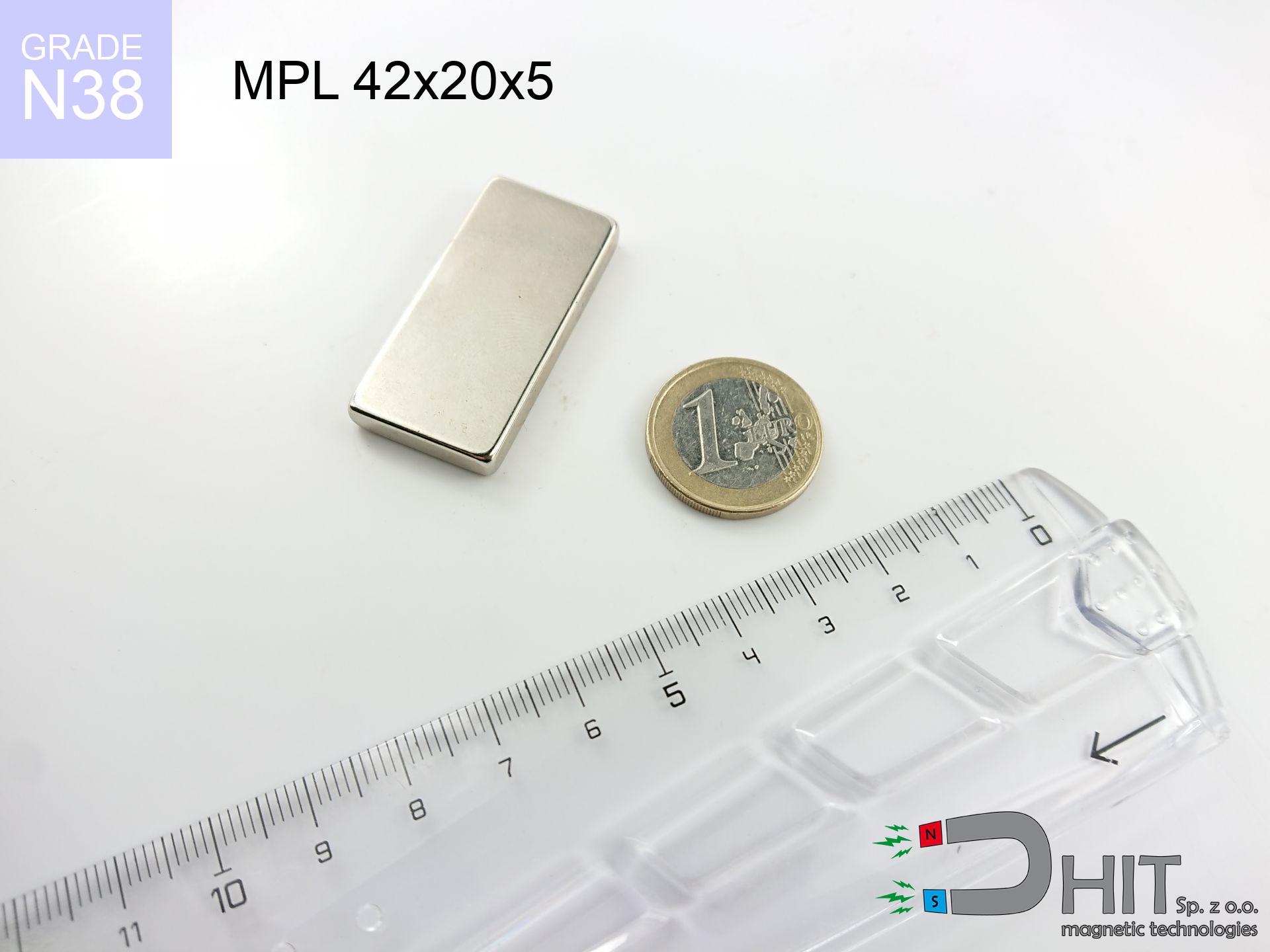UMC 42x7/4x9 / N38 - cylindrical magnetic holder
cylindrical magnetic holder
Catalog no 320411
GTIN: 5906301814672
Diameter [±0,1 mm]
42 mm
internal diameter Ø [±0,1 mm]
7/4 mm
Height [±0,1 mm]
9 mm
Weight
72 g
Load capacity
32 kg / 313.81 N
Coating
[NiCuNi] nickel
29.99 ZŁ with VAT / pcs + price for transport
24.38 ZŁ net + 23% VAT / pcs
bulk discounts:
Need more?Hunting for a discount?
Call us now
+48 888 99 98 98
alternatively send us a note using
form
the contact page.
Force along with shape of neodymium magnets can be estimated with our
online calculation tool.
Same-day processing for orders placed before 14:00.
UMC 42x7/4x9 / N38 - cylindrical magnetic holder
Magnetic properties of material N38
Physical properties of NdFeB
Shopping tips
Advantages as well as disadvantages of neodymium magnets NdFeB.
Besides their magnetic performance, neodymium magnets are valued for these benefits:
- They retain their magnetic properties for around 10 years – the loss is just ~1% (in theory),
- They protect against demagnetization induced by surrounding magnetic fields effectively,
- In other words, due to the glossy nickel coating, the magnet obtains an aesthetic appearance,
- They exhibit elevated levels of magnetic induction near the outer area of the magnet,
- With the right combination of compounds, they reach increased thermal stability, enabling operation at or above 230°C (depending on the form),
- The ability for precise shaping or customization to specific needs – neodymium magnets can be manufactured in many forms and dimensions, which extends the scope of their use cases,
- Important function in cutting-edge sectors – they find application in computer drives, electric motors, medical equipment or even other advanced devices,
- Compactness – despite their small size, they generate strong force, making them ideal for precision applications
Disadvantages of rare earth magnets:
- They may fracture when subjected to a heavy impact. If the magnets are exposed to mechanical hits, it is advisable to use in a steel housing. The steel housing, in the form of a holder, protects the magnet from breakage and additionally reinforces its overall resistance,
- They lose power at elevated temperatures. Most neodymium magnets experience permanent degradation in strength when heated above 80°C (depending on the shape and height). However, we offer special variants with high temperature resistance that can operate up to 230°C or higher,
- They rust in a wet environment, especially when used outside, we recommend using encapsulated magnets, such as those made of polymer,
- The use of a protective casing or external holder is recommended, since machining threads in neodymium magnets is risky,
- Safety concern from tiny pieces may arise, when consumed by mistake, which is significant in the context of child safety. Furthermore, miniature parts from these devices might interfere with diagnostics when ingested,
- Higher purchase price is one of the drawbacks compared to ceramic magnets, especially in budget-sensitive applications
Maximum magnetic pulling force – what affects it?
The given holding capacity of the magnet means the highest holding force, measured in ideal conditions, specifically:
- with the use of low-carbon steel plate serving as a magnetic yoke
- of a thickness of at least 10 mm
- with a refined outer layer
- in conditions of no clearance
- under perpendicular detachment force
- under standard ambient temperature
Key elements affecting lifting force
The lifting capacity of a magnet depends on in practice key elements, from primary to secondary:
- Air gap between the magnet and the plate, since even a very small distance (e.g. 0.5 mm) can cause a drop in lifting force of up to 50%.
- Direction of applied force, because the maximum lifting capacity is achieved under perpendicular application. The force required to slide the magnet along the plate is usually several times lower.
- Thickness of the plate, as a plate that is too thin causes part of the magnetic flux not to be used and to remain wasted in the air.
- Material of the plate, because higher carbon content lowers holding force, while higher iron content increases it. The best choice is steel with high magnetic permeability and high saturation induction.
- Surface of the plate, because the more smooth and polished it is, the better the contact and consequently the greater the magnetic saturation.
- Operating temperature, since all permanent magnets have a negative temperature coefficient. This means that at high temperatures they are weaker, while at sub-zero temperatures they become slightly stronger.
* Lifting capacity testing was carried out on a smooth plate of optimal thickness, under perpendicular forces, in contrast under parallel forces the holding force is lower. Additionally, even a minimal clearance {between} the magnet and the plate reduces the holding force.
Handle Neodymium Magnets Carefully
Magnets will attract to each other, so remember not to allow them to pinch together without control or place your fingers in their path.
In the case of placing a finger in the path of a neodymium magnet, in such a case, a cut or even a fracture may occur.
Magnets are not toys, youngest should not play with them.
Neodymium magnets are not toys. Be cautious and make sure no child plays with them. They can be a significant choking hazard. If multiple magnets are swallowed, they can attract to each other through the intestinal walls, causing severe injuries, and even death.
Never bring neodymium magnets close to a phone and GPS.
Magnetic fields generated by neodymium magnets interfere with compasses and magnetometers used in navigation, as well as internal compasses of smartphones and GPS devices.
Neodymium magnets are known for their fragility, which can cause them to become damaged.
Neodymium magnets are characterized by considerable fragility. Neodymium magnets are made of metal and coated with a shiny nickel, but they are not as durable as steel. At the moment of connection between the magnets, small metal fragments can be dispersed in different directions.
Dust and powder from neodymium magnets are highly flammable.
Do not attempt to drill into neodymium magnets. Mechanical processing is also not recommended. Once crushed into fine powder or dust, this material becomes highly flammable.
Neodymium magnets should not be near people with pacemakers.
Neodymium magnets generate strong magnetic fields. As a result, they interfere with the operation of a pacemaker. This is because many of these devices are equipped with a function that deactivates the device in a magnetic field.
Neodymium magnets can demagnetize at high temperatures.
Although magnets have shown to retain their effectiveness up to 80°C or 175°F, this temperature may vary depending on the type of material, shape, and intended use of the magnet.
If you have a nickel allergy, avoid contact with neodymium magnets.
Studies show a small percentage of people have allergies to certain metals, including nickel. An allergic reaction often manifests as skin redness and rash. If you have a nickel allergy, you can try wearing gloves or simply avoid direct contact with nickel-plated neodymium magnets.
Under no circumstances should neodymium magnets be placed near a computer HDD, TV, and wallet.
Strong fields generated by neodymium magnets can damage magnetic storage media such as floppy disks, credit cards, magnetic ID cards, cassette tapes, video tapes, or other similar devices. They can also damage televisions, VCRs, computer monitors, and CRT displays. You should especially avoid placing neodymium magnets near electronic devices.
Comparing neodymium magnets to ferrite magnets (found in speakers), they are 10 times stronger, and their power can surprise you.
Read the information on our website on how to properly utilize neodymium magnets and avoid significant harm to your body and unintentional disruption to the magnets.
Warning!
So you are aware of why neodymium magnets are so dangerous, see the article titled How dangerous are strong neodymium magnets?.




![UMGGW 88x8.5 [M6] GW / N38 - magnetic holder rubber internal thread UMGGW 88x8.5 [M6] GW / N38 - magnetic holder rubber internal thread](https://cdn3.dhit.pl/graphics/products/umg-88x8.5-m8-gw-let.jpg)




